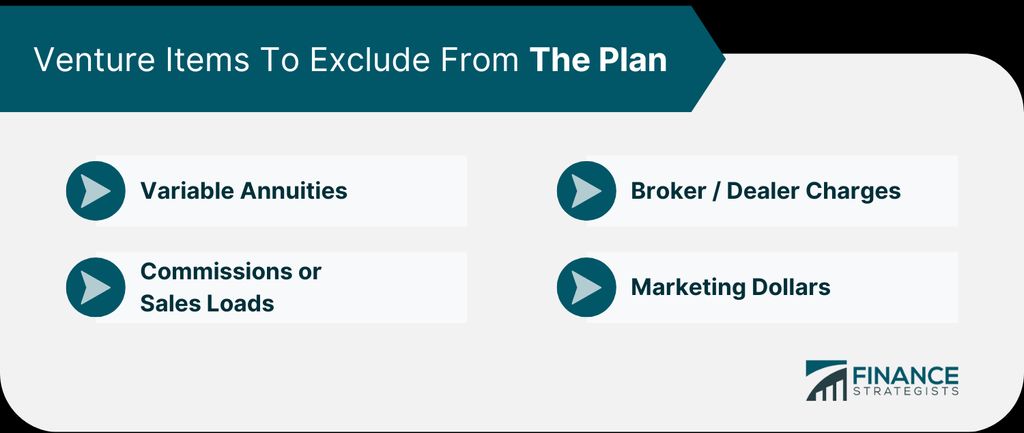
Email productivity is crucial for lawyers to effectively manage their communication with clients, efficiently handle case-related emails, maximize their time and productivity, and enhance collaboration with colleagues. To boost lawyer email productivity, a powerful tool can be used. This article explores the key features of the tool, the benefits it offers to lawyers, and provides case studies showcasing how lawyers have benefited from its use.

Streamlining communication with clients is crucial for lawyers to effectively manage their caseload and provide timely updates. With the help of this tool, lawyers can automate email templates and responses, ensuring consistent and professional communication. Additionally, the advanced search and filtering capabilities allow lawyers to quickly find relevant emails and information, saving valuable time. By streamlining communication, lawyers can focus on their clients' needs and provide a seamless experience.
Efficiently managing case-related emails is crucial for lawyers to stay organized and ensure timely communication with clients and colleagues. Here are some strategies to streamline this process:
Implement email filters: Set up filters to automatically sort and prioritize case-related emails. This can help you quickly identify and respond to urgent matters.
Use email templates: Create pre-written email templates for common case-related inquiries or updates. This can save you time and ensure consistency in your communication.
Utilize email threading: Email threading allows you to view an entire conversation thread in one place, making it easier to follow the progression of discussions and stay up to date.
Tip: Regularly review and update your email filters and templates to ensure they align with your current caseload and priorities.
By implementing these strategies, lawyers can effectively manage their case-related emails and improve their overall productivity.
In order to maximize time and productivity, lawyers can benefit from using the tool's advanced search and filtering capabilities. This feature allows lawyers to quickly and efficiently find specific emails or information within their inbox, saving valuable time that would otherwise be spent manually searching through a large volume of emails. By utilizing the tool's advanced search and filtering, lawyers can easily locate important emails related to specific cases or clients, ensuring that no important information is missed.
Additionally, the tool's email tracking and analytics feature provides lawyers with valuable insights into their email communication. Lawyers can track when emails are opened, clicked, and replied to, allowing them to gauge the effectiveness of their communication and follow up accordingly. This data-driven approach to email communication can help lawyers prioritize their time and focus on the most important emails, further enhancing their productivity.
To further assist lawyers in maximizing their time and productivity, the tool seamlessly integrates with case management systems. This integration allows lawyers to easily access case-related information and documents directly from their email client, eliminating the need to switch between multiple platforms. By streamlining their workflow and reducing the time spent on administrative tasks, lawyers can dedicate more time to their core legal work, ultimately increasing their productivity and efficiency.
Collaboration is a crucial aspect of a lawyer's work, and the right tool can greatly enhance this process. With the tool's advanced features, lawyers can easily collaborate with their colleagues on various email-related tasks. Efficiently share important case-related information, discuss strategies, and provide updates in real-time. The tool's intuitive interface and seamless integration with other systems make it effortless to work together as a team.

Email templates and automation are key features of the tool that can significantly improve a lawyer's email productivity. With email templates, lawyers can save time by creating pre-written email drafts for common scenarios, such as client onboarding, case updates, or scheduling meetings. These templates can be easily customized and personalized, allowing lawyers to quickly respond to emails without having to start from scratch.
Additionally, the tool offers automation capabilities that can further streamline email workflows. Lawyers can set up rules and triggers to automatically categorize and prioritize incoming emails, ensuring that important messages are not missed. Automation can also be used to schedule email sending at specific times, helping lawyers manage their workload and maintain a consistent communication schedule.
To illustrate the benefits of email templates and automation, here are a few examples:
In summary, email templates and automation are powerful tools that can revolutionize how lawyers manage their email communication. By leveraging these features, lawyers can save time, improve organization, and enhance client communication.
The tool offers advanced search and filtering capabilities, allowing lawyers to quickly find specific emails or information within their inbox. With the ability to search by keywords, sender, recipient, date, and other criteria, lawyers can easily locate relevant emails and filter out unnecessary clutter. This saves valuable time and ensures that important emails are not overlooked. Additionally, the tool supports Boolean operators and wildcard searches, enabling lawyers to perform complex searches and narrow down results even further.
Email tracking and analytics is a crucial feature of the tool that allows lawyers to gain valuable insights into their email communication. By tracking email opens, clicks, and responses, lawyers can assess the effectiveness of their emails and make data-driven decisions to improve their communication strategies. The tool provides detailed analytics and reports, presenting structured, quantitative data in an easy-to-understand format. This enables lawyers to identify trends, measure the success of their email campaigns, and optimize their communication with clients and colleagues.
The tool seamlessly integrates with popular case management systems, allowing lawyers to streamline their workflow and access all relevant case information in one place. By connecting the tool with their case management system, lawyers can easily link emails to specific cases, view case-related documents and notes, and track the progress of their cases. This integration eliminates the need for manual data entry and ensures that lawyers have a comprehensive view of their cases without switching between multiple platforms.

Using the tool can significantly reduce the time spent on repetitive email tasks and increase overall productivity. With features like email templates and automation, lawyers can quickly compose and send standardized emails, saving valuable time. The advanced search and filtering capabilities allow for efficient organization and retrieval of important emails, eliminating the need for manual sorting. Additionally, the tool's email tracking and analytics provide valuable insights into email engagement and response rates, enabling lawyers to prioritize and follow up on critical communications.
To illustrate the impact of using the tool, here are some key statistics:
These numbers demonstrate the tangible benefits of the tool in terms of time savings and increased efficiency. By leveraging its features, lawyers can focus more on their core legal work and deliver better outcomes for their clients.
Using the tool can greatly improve the organization and workflow of lawyers. With its advanced search and filtering capabilities, lawyers can easily find and access important emails related to their cases. The tool also allows for the creation of email templates and automation, saving lawyers time and effort in composing repetitive emails. Additionally, the integration with case management systems ensures that all case-related emails are seamlessly connected and easily accessible. Overall, the tool provides a streamlined and efficient email management system for lawyers.
Enhanced client communication is crucial for lawyers to build strong relationships and provide excellent service. With the Tool, lawyers can streamline their email communication with clients, ensuring timely and effective responses.
One of the key features of the Tool is its email templates and automation functionality. Lawyers can create pre-designed email templates for common client interactions, such as initial consultations, case updates, or document requests. This saves time and ensures consistent messaging, while still allowing for personalization when needed.
In addition, the Tool provides advanced search and filtering capabilities, making it easy for lawyers to find specific client emails or conversations. This helps lawyers stay organized and ensures that no important client communication is missed.
To further enhance client communication, the Tool offers email tracking and analytics. Lawyers can see when clients have opened their emails, allowing them to follow up at the right time. This data-driven approach helps lawyers prioritize their communication and ensures that clients receive the attention they need.
Overall, the Tool empowers lawyers to communicate with clients more efficiently and effectively, ultimately leading to better client satisfaction and stronger professional relationships.
Data-driven decision making is a crucial aspect of modern legal practice. By leveraging quantitative data, lawyers can make informed decisions that have a higher chance of success. One effective way to present structured data is through a Markdown table. For example:
This table provides a clear overview of the win rates for different case types, allowing lawyers to identify patterns and prioritize their efforts.
In addition to quantitative data, lawyers can also benefit from qualitative points presented in a bulleted or numbered list. For instance:
These steps can help lawyers gather valuable insights and make well-informed decisions.
Remember, data-driven decision making is not just about numbers. It's about using both quantitative and qualitative information to guide legal strategies and achieve the best possible outcomes.

Law Firm X, a prominent law firm specializing in corporate law, implemented the email productivity tool to streamline their communication and enhance their workflow. The tool's advanced search and filtering capabilities allowed the firm to easily locate and manage case-related emails, saving valuable time and increasing efficiency. Additionally, the integration with their case management system provided a seamless workflow, enabling the firm to access all relevant information in one centralized platform. As a result, Law Firm X experienced improved organization, enhanced collaboration with colleagues, and enhanced client communication.
Solo Practitioner Y, a lawyer specializing in family law, has greatly benefited from using the email productivity tool. With the tool's advanced search and filtering capabilities, Solo Practitioner Y is able to quickly find and organize case-related emails, saving valuable time. The tool's integration with case management systems also allows Solo Practitioner Y to seamlessly access and update client information, improving overall efficiency. Additionally, the email tracking and analytics feature provides valuable insights into client communication, helping Solo Practitioner Y make data-driven decisions. Overall, the email productivity tool has significantly enhanced Solo Practitioner Y's workflow and client management process.
The corporate legal department at Z has experienced significant improvements in email productivity since implementing the tool. With the ability to automate email templates and streamline communication, the department has saved valuable time and increased efficiency. The advanced search and filtering features have also enhanced their ability to manage and organize case-related emails. Additionally, the integration with their case management system has improved collaboration and workflow among team members.
In conclusion, the use of this tool can greatly enhance lawyer email productivity. By automating repetitive tasks and providing advanced features, such as email templates and smart categorization, lawyers can save valuable time and focus on more important aspects of their work. With the increasing reliance on email communication in the legal profession, it is essential for lawyers to leverage technology to streamline their workflow. This tool offers a user-friendly interface and powerful functionalities that can revolutionize the way lawyers manage their emails. By adopting this tool, lawyers can increase their efficiency, improve client communication, and ultimately achieve better outcomes in their cases.
Yes, this tool is compatible with most popular email providers such as Gmail, Outlook, and Yahoo Mail.
Absolutely! The tool has a user-friendly interface and provides step-by-step instructions for easy setup and usage.
Yes, the tool allows you to create and customize email templates to suit your specific requirements.
Yes, the tool offers email tracking features that allow you to track when your emails are opened and read.
Certainly! The tool provides seamless integration with popular case management systems, allowing you to streamline your workflow.
Absolutely! The tool prioritizes data security and complies with legal industry standards to ensure the confidentiality and privacy of your emails.